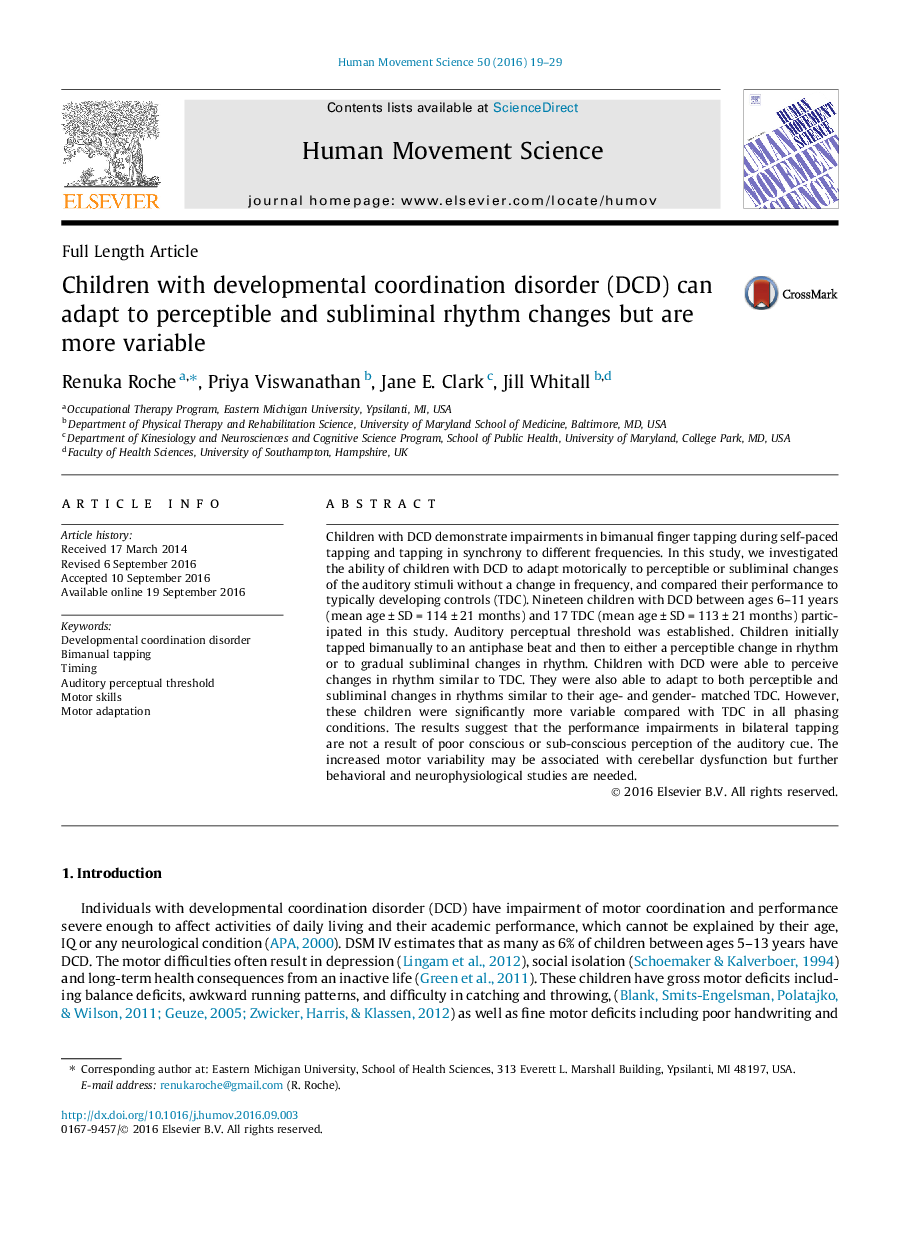| کد مقاله | کد نشریه | سال انتشار | مقاله انگلیسی | نسخه تمام متن |
|---|---|---|---|---|
| 5042039 | 1474215 | 2016 | 11 صفحه PDF | دانلود رایگان |

- We tested the ability of DCD children to adapt to perceptible/subliminal changes.
- Children with DCD were able to perceive changes in rhythm similar to TD children.
- They are able to adapt to both perceptible and subliminal changes in rhythms.
- DCD group were more variable compared to TD controls in all conditions.
Children with DCD demonstrate impairments in bimanual finger tapping during self-paced tapping and tapping in synchrony to different frequencies. In this study, we investigated the ability of children with DCD to adapt motorically to perceptible or subliminal changes of the auditory stimuli without a change in frequency, and compared their performance to typically developing controls (TDC). Nineteen children with DCD between ages 6-11 years (mean age ± SD = 114 ± 21 months) and 17 TDC (mean age ± SD = 113 ± 21 months) participated in this study. Auditory perceptual threshold was established. Children initially tapped bimanually to an antiphase beat and then to either a perceptible change in rhythm or to gradual subliminal changes in rhythm. Children with DCD were able to perceive changes in rhythm similar to TDC. They were also able to adapt to both perceptible and subliminal changes in rhythms similar to their age- and gender- matched TDC. However, these children were significantly more variable compared with TDC in all phasing conditions. The results suggest that the performance impairments in bilateral tapping are not a result of poor conscious or sub-conscious perception of the auditory cue. The increased motor variability may be associated with cerebellar dysfunction but further behavioral and neurophysiological studies are needed.
Journal: Human Movement Science - Volume 50, December 2016, Pages 19-29